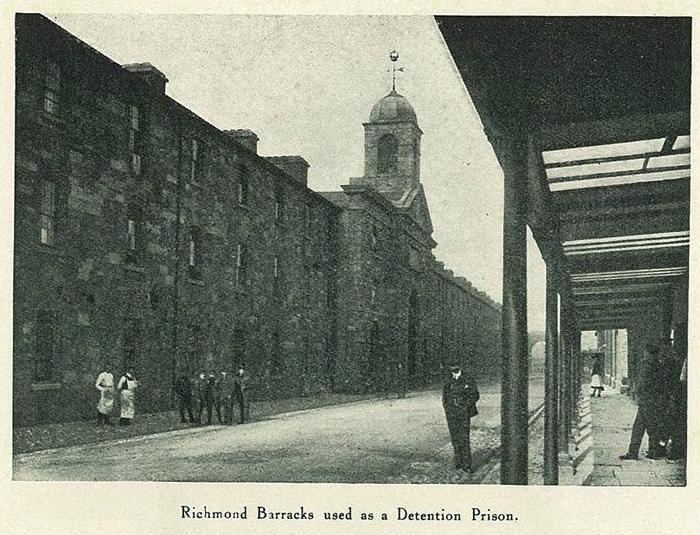Type Barracks Province Leinster Phone +353 1 222 8400 | In use 1814–1922 Year built 1810 | |
 | ||
Garrison Argyll and Sutherland HighlandersQueen's Own Royal West Kent Regiment13th (1st Somersetshire) (Prince Albert's Light Infantry) Regiment of FootRoyal Irish Regiment Hours Open today · 10AM–12:45PM, 1:45–4PMThursday10AM–12:45PM, 1:45–4PMFriday10AM–12:45PM, 1:45–4PMSaturday11AM–12:30PMSundayClosedMonday10AM–12:45PM, 1:45–4PMTuesday10AM–12:45PM, 1:45–4PMWednesday10AM–12:45PM, 1:45–4PMSuggest an edit Similar General Post Office - Dublin, Kilmainham Gaol, Boland's Mill, Four Courts, Collins Barracks - Dublin Profiles | ||
Launch of the richmond barracks 2016 project
Richmond Barracks was a British Army barracks in Inchicore, Dublin, Ireland. It is now a museum.
Contents
- Launch of the richmond barracks 2016 project
- Irish rebels held in richmond barracks are remembered
- History
- Museum
- References
Irish rebels held in richmond barracks are remembered
History
The barracks, which were named after Charles Lennox, 4th Duke of Richmond, were completed in 1810 and first occupied by the British Army in 1814.
Many Irishmen were stationed there before going overseas to fight in the First World War. During the First World War the barracks also served as the 2nd cavalry depot providing accommodation for the 4th Queen's Own Hussars, the 8th King's Royal Irish Hussars, the 11th Hussars and the 13th Hussars.
Deputy Michael Conaghan of the Inchicore Kilmainham Heritage Group has said, "The remaining buildings of Richmond Barracks here have very specific connections to the Easter Rising and its immediate aftermath. After the surrender, it was designated by the British as the holding centre for over 3,000 suspected rebels, until they were released or sent to prison camps in England, Wales and Northern Ireland... The signatories of the Proclamation (with the exception of James Connolly) and other leaders were also interned, court-martialed and sentenced to death in the barracks before they were sent to Kilmainham Gaol for execution." The Prime Minister H. H. Asquith visited on 12 May 1916, after which no further executions of prisoners took place.
After the Irish Free State was founded in 1922, the Barracks was occupied by the Irish Army, and briefly named Keogh Barracks, after Commander Tom Keogh who fought in the war of independence. The Irish government closed Keogh Barracks down in 1922.
The building came into possession of the Dublin Corporation and was used to house Dublin families who were on the housing list; they built Keogh Square, which was demolished in 1970, and this was replaced by St. Michaels Estate there. At the same time as the transfer of the barracks to the corporation, Christian Brothers purchased three of the buildings and turned two of them into class rooms and called it "St Michaels Christian Brothers School", a national school opening in 1929. President Mary Robinson visited the school in October 1996. It closed down in 2006.
Museum
In May 2016, as part of the centenary celebrations of the Easter Rising, Richmond Barracks reopened as a museum, incorporating nearby Goldenbridge Cemetery.
